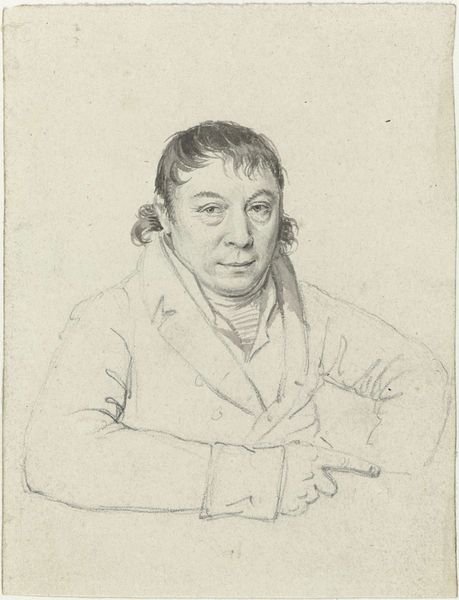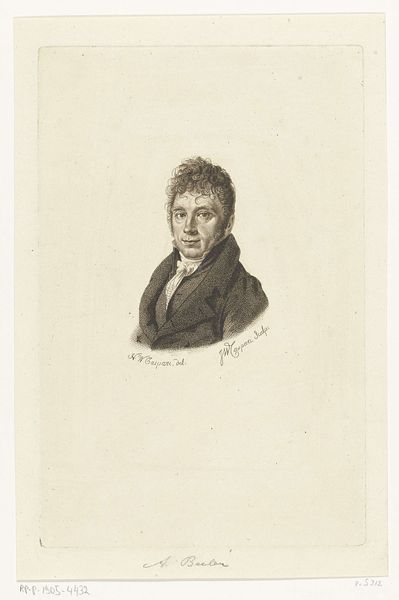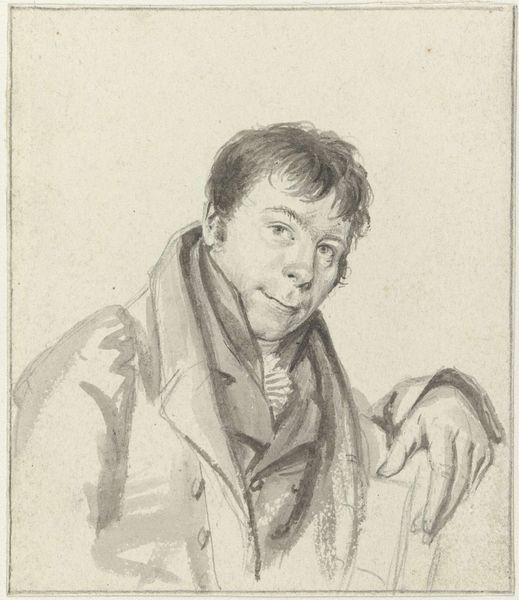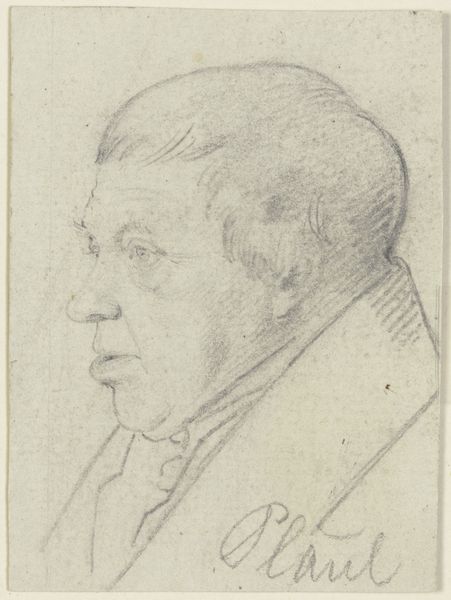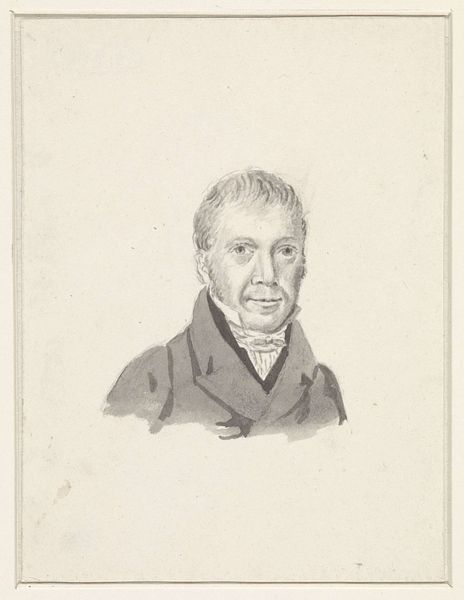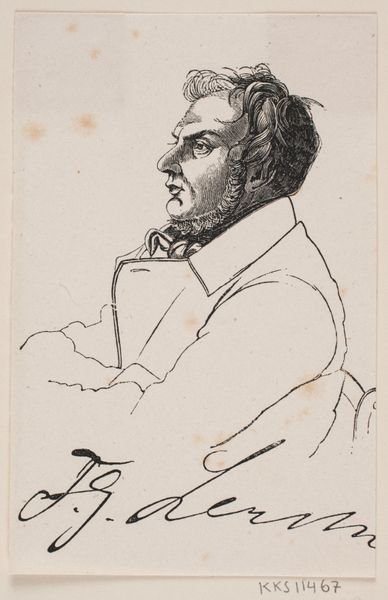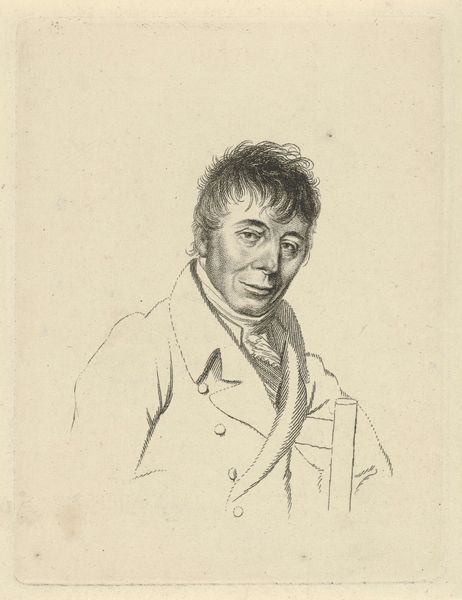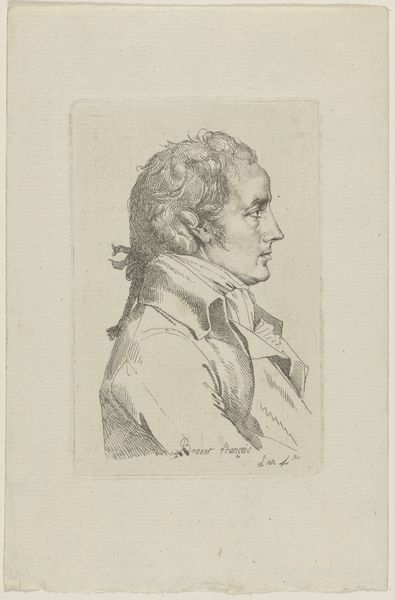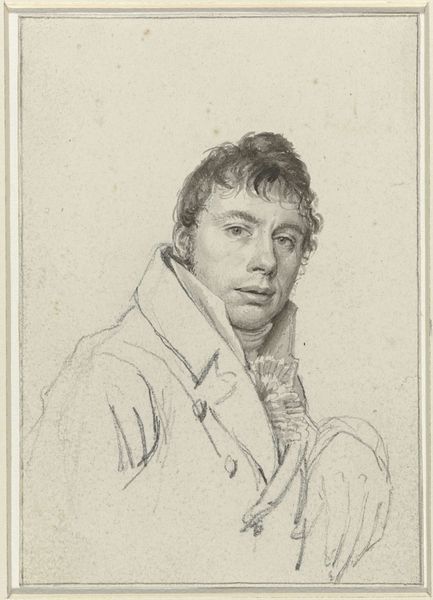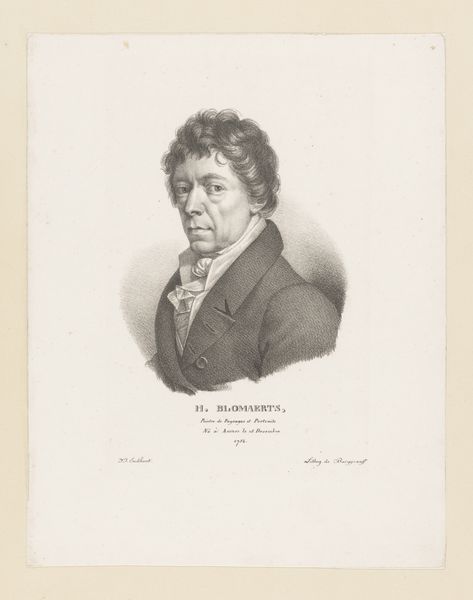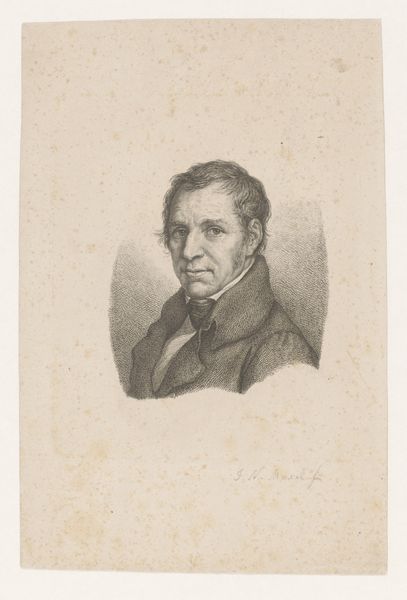
drawing, pencil
#
portrait
#
drawing
#
pencil drawing
#
romanticism
#
pencil
#
portrait drawing
#
realism
Dimensions: height 125 mm, width 90 mm
Copyright: Rijks Museum: Open Domain
Curator: This is a pencil drawing entitled "Portret van André Burnier," created sometime between 1780 and 1829. Editor: I am immediately struck by the starkness of the portrait, how little it gives away and, at the same time, there's an intense directness about the sitter's gaze. It is a fairly subdued use of the pencil medium too. Curator: Indeed. This drawing adheres to many conventions within Romantic portraiture, especially how it suggests introspection. Burnier's look invites the viewer to interpret hidden depths. The Romantic period, broadly, explored individual subjectivity. Editor: Right, and considering it is a pencil drawing, the surface and what little shading there is conveys a certain texture of both the paper and the man's clothing, that seems significant to me. Is it merely representational, or did the artist consider the weave and perhaps the making of the cloth? Curator: I think you're right to question what seems to be representational! A symbolic reading might highlight how clothing was absolutely tied to status, so rendering the textile could denote aspects of wealth, class, and profession. Editor: Precisely. Also, let's think about pencil itself as a medium— its relative accessibility in contrast to paints means a wider distribution of portraiture for an emerging middle class. Curator: Good point! Furthermore, notice Burnier's composed posture and attire. How the subject presents themselves through the artistry can denote a desire to appear virtuous. Editor: I think looking closer at how these kind of materials impact social and individual change gives these artworks more dimension and keeps these works relevant for contemporary viewing. Curator: Agreed, by exploring portraits such as this, we engage not only with the likeness of a person, but also the likeness of an era. Editor: Definitely, and for me this deep dive reminds me of the ongoing relevance of historical context when we evaluate these artefacts of past eras.
Comments
No comments
Be the first to comment and join the conversation on the ultimate creative platform.

